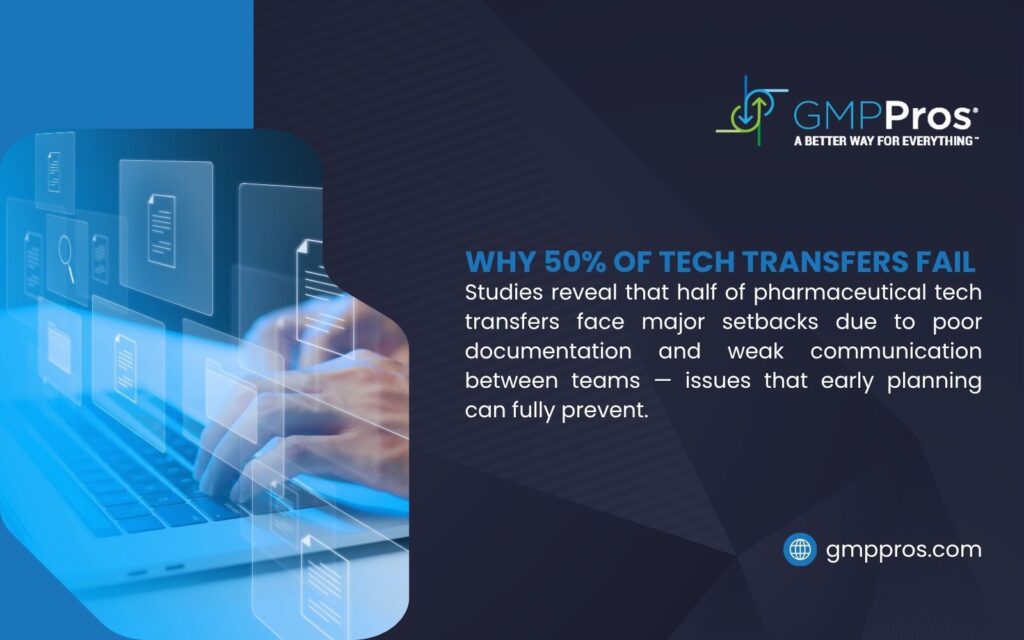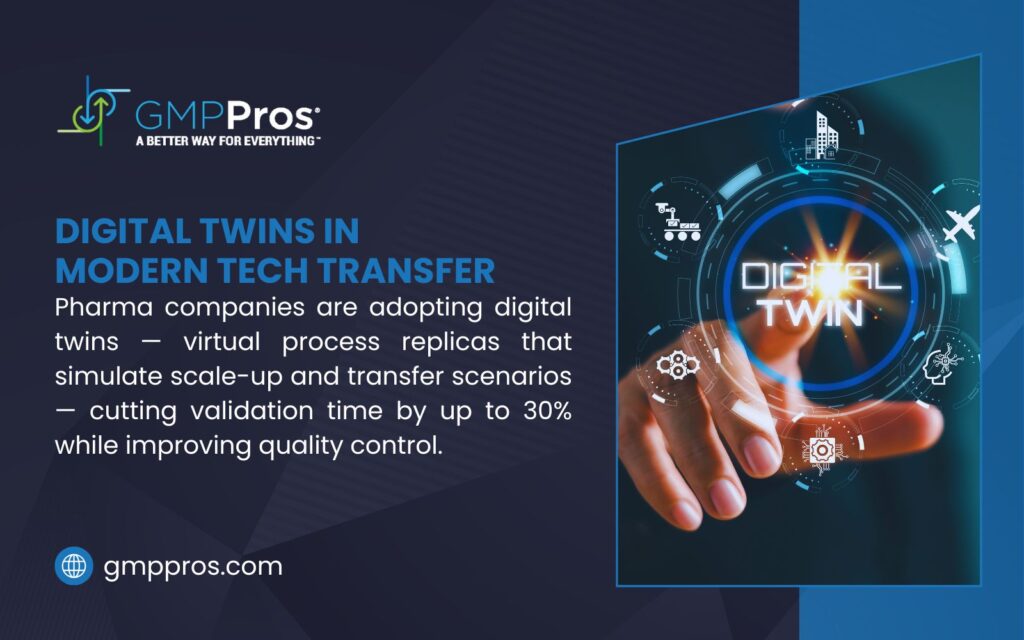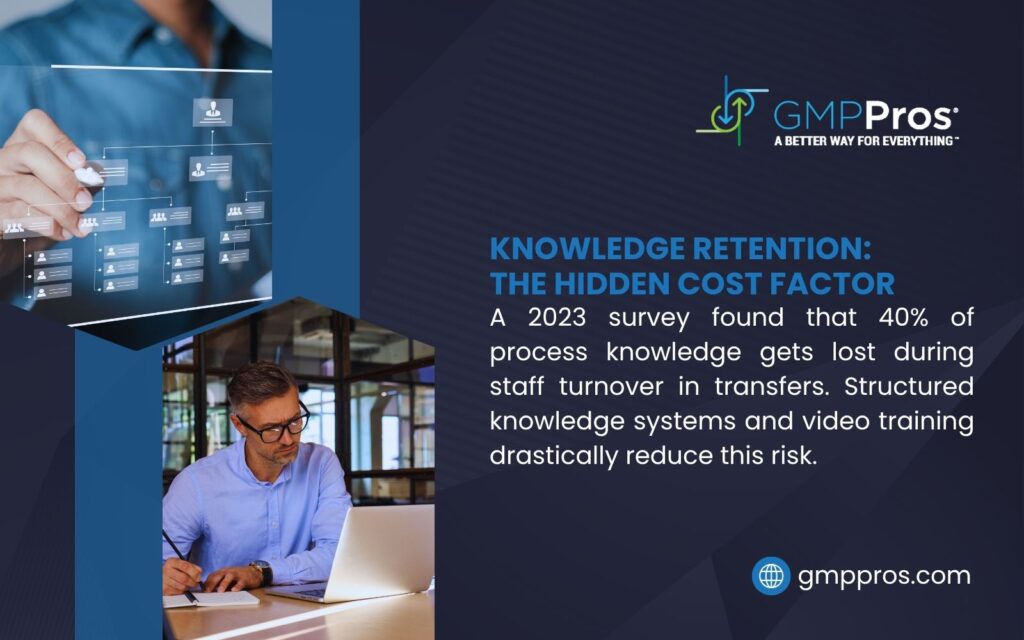Pharmaceutical companies lose millions each year when technology transfers fail.
A recent study found that up to 50% of tech transfer projects experience large delays or quality issues during scale-up.
Tech transfer pharma processes move products from development labs to commercial manufacturing facilities. When done right, these transfers maintain product quality while meeting regulatory requirements and business timelines.
This guide covers everything you need to know about successful pharmaceutical technology transfer.
What Is Tech Transfer Pharma?
Tech transfer pharma refers to the systematic process of moving pharmaceutical products, processes, and analytical methods from one location or organization to another.
This happens most commonly when products move from research and development to commercial manufacturing.
The goal is to reproduce the product exactly as developed while adapting to different equipment, facilities, and scale. Every aspect of the manufacturing process must transfer successfully to maintain product quality and regulatory compliance.
Technology transfer includes all the knowledge, documentation, and training needed for the receiving site to manufacture products independently. This goes beyond simple documentation to include hands-on training and process verification.
Transfer Type | Common Scenarios | Key Challenges |
R&D to Manufacturing | Product commercialization | Scale-up complexities |
Site to Site | Capacity expansion | Equipment differences |
Contract Manufacturing | Outsourcing production | Communication gaps |

The Components Of A Successful Tech Transfer
Successful tech transfer pharma requires careful attention to multiple interconnected elements. Each component affects product quality and regulatory compliance.
Documentation forms the foundation of every technology transfer. Your transfer package must include complete manufacturing procedures, analytical methods, specifications, and quality control requirements. Missing or incomplete documentation causes most transfer failures.
The transfer team composition matters significantly. You need representatives from development, manufacturing, quality assurance, and regulatory affairs. Each perspective helps identify potential issues before they cause problems.
Process knowledge represents the most valuable but often poorly communicated aspect of transfers. Written procedures can’t capture every detail that experienced operators know. Face-to-face training and observation periods help bridge this gap.
Equipment qualification ensures the receiving site has suitable equipment. Even identical equipment models can perform differently based on installation, maintenance, and environmental conditions. Thorough qualification prevents surprises during manufacturing.
How To Plan Your Technology Transfer
Technology transfer planning should start months before actual implementation. Early planning identifies risks and allows time to address issues before they impact timelines.
The first step involves defining clear transfer objectives. What success looks like varies between projects. Some transfers prioritize speed while others focus on risk minimization or cost control.
Risk assessment helps prioritize activities and resources. High-risk areas need more attention and verification. Low-risk aspects can use simplified approaches.
Planning Element | Timeline | Key Activities |
Initial Assessment | 3-6 months before | Gap analysis, resource planning |
Documentation Preparation | 2-4 months before | Protocol writing, SOP creation |
Training Development | 1-3 months before | Materials creation, trainer selection |
Creating a detailed project plan with specific milestones keeps transfers on track. Most successful tech transfer pharma projects use structured project management approaches with clear accountability.
Companies often benefit from life science project management consulting during complex transfers. Professional guidance helps avoid common pitfalls and maintains momentum through challenges.
Documentation Requirements
Documentation quality determines technology transfer success more than any other factor. Incomplete or unclear documentation causes delays, quality issues, and regulatory problems.
The technology transfer protocol defines the entire transfer scope and acceptance criteria. This document outlines what will transfer, how success will be measured, and who is responsible for each activity.
Manufacturing batch records must translate development procedures into production-scale instructions. The electronic batch record system at the receiving site needs complete, unambiguous instructions that operators can follow consistently.
Analytical method transfer requires particular attention. Methods developed in research labs often need modification for production environments. Method validation at the receiving site confirms analytical procedures work as intended.
Standard operating procedures capture routine activities not covered in batch records. These SOPs ensure consistent execution of supporting activities like equipment cleaning, sampling, and documentation practices.
The Technology Transfer Process
The actual tech transfer pharma process follows a structured sequence of activities. Each phase builds on previous work and sets the foundation for subsequent steps.
Knowledge transfer sessions bring development and manufacturing teams together. These meetings allow questions, clarify procedures, and identify potential issues. Face-to-face interaction reveals nuances that written documents miss.
Training programs ensure receiving site personnel understand procedures and expectations. Hands-on training works better than classroom instruction alone. Operators need actual experience with the process before independent manufacturing begins.
Equipment familiarization lets operators understand how equipment performs with the actual product. Even experienced operators need time to learn specific process requirements and equipment responses.
Process demonstration runs verify that transferred procedures work at the receiving site. These runs follow complete manufacturing procedures under normal operating conditions. Results confirm the process produces acceptable product quality.
Scale-Up Considerations
Moving from development scale to commercial production creates unique challenges. Process parameters that work in small batches don’t always translate directly to larger scales.
Mixing dynamics change significantly with scale. A process that mixes well in a 10-liter vessel might show poor mixing in a 1000-liter tank. Heat transfer, shear rates, and residence times all scale differently.
Equipment capabilities at production scale often differ from development equipment. Production equipment may have different mixing speeds, temperature control precision, or material handling characteristics. Understanding these differences helps adjust procedures appropriately.
The 505b2 drugs development pathway often requires careful scale-up documentation to show manufacturing consistency. Regulatory agencies pay close attention to how processes change during scale-up.
Scale-Up Factor | Development Scale | Production Scale | Adjustment Needed |
Batch Size | 1-10 kg | 100-1000 kg | Process parameters |
Equipment | Lab-scale | Production-scale | Operating ranges |
Cycle Time | Hours | Days | Scheduling |
Quality Considerations in Tech Transfer
Quality assurance plays a central role throughout technology transfer. Every transfer activity must maintain product quality attributes established during development.
Critical quality attributes defined during development must remain within specifications after transfer. These attributes directly affect product safety and efficacy. Any changes require careful evaluation and often regulatory notification.
Process validation at the receiving site demonstrates consistent manufacturing capability. Validation protocols define acceptance criteria and number of batches needed. Most transfers require three consecutive successful batches for validation.
Change control procedures manage deviations from development processes. Even minor changes need evaluation to ensure they don’t affect product quality. Documentation of changes and their justification becomes part of the regulatory file.
Data quality monitoring throughout tech transfer pharma projects tracks key metrics and identifies trends. Early detection of issues allows corrective action before they affect product quality or timelines.
Regulatory Compliance Requirements
Regulatory agencies have specific expectations for technology transfers. Meeting these requirements prevents approval delays and compliance issues.
The FDA expects manufacturers to demonstrate process understanding and control after transfer. This means showing that the receiving site can consistently produce quality products.
Documentation submitted to regulatory agencies must reflect actual manufacturing practices. Any differences between approved procedures and current practices require regulatory notification or approval.
Companies working on regulated manufacturing projects need expertise in pharma regulatory compliance requirements. Professional guidance ensures transfers meet all regulatory expectations.
Inspection readiness at the receiving site matters increasingly. Regulatory agencies may inspect transfer activities and documentation. Sites must be prepared to explain transfer decisions and demonstrate process control.
Common Technology Transfer Challenges
Most tech transfer pharma projects encounter predictable challenges. Recognizing these issues early allows proactive management.
Communication gaps between sending and receiving sites create the most frequent problems. Development scientists and production operators often speak different languages. Misunderstandings lead to incorrect execution and quality issues.
Equipment differences affect process performance even when specifications appear identical. Minor variations in equipment design, installation, or operation change how processes behave.
Timeline pressures push teams to skip steps or accept marginal results. This short-term thinking creates long-term problems. Delays during transfer cost less than fixing quality issues after launch.
Resource constraints limit what teams can accomplish. Tech transfers compete with other priorities for personnel time and attention. Adequate resource allocation from the start prevents delays.
Challenge Type | Typical Impact | Prevention Strategy |
Poor Communication | Process errors | Structured knowledge transfer |
Equipment Issues | Quality problems | Thorough qualification |
Insufficient Resources | Timeline delays | Early resource commitment |

Best Practices for Successful Transfers
Experience across hundreds of technology transfers reveals consistent success factors. Following these practices significantly improves transfer outcomes.
Early involvement of the receiving site in development activities builds process understanding. When manufacturing teams participate in late-stage development, they learn critical process knowledge before formal transfer begins.
Structured knowledge management captures and communicates process understanding. This goes beyond written procedures to include video demonstrations, troubleshooting guides, and lessons learned documentation.
Adequate time allocation prevents rushed activities and poor decisions. Most successful transfers take 6-12 months from planning to validation completion. Attempting faster transfers increases risk significantly.
Implementation of manufacturing process improvement principles during transfer optimizes processes for the production environment. This proactive approach prevents problems rather than fixing them later.
Technology Transfer for Different Product Types
Different pharmaceutical products present unique transfer challenges. Understanding these differences helps plan appropriate transfer strategies.
Small molecule drugs typically transfer more easily than biologics. Chemical synthesis processes are generally more robust and less sensitive to minor variations.
Biologic products require extremely careful tech transfer pharma approaches. Cell culture processes are sensitive to countless variables. Small changes in media, equipment, or procedures can significantly affect product quality.
Sterile products add complexity through aseptic processing requirements. Environmental control, operator training, and contamination prevention need special attention during transfer.
Companies developing target product profile specifications should consider manufacturing transferability during early development. Design choices made early affect transfer difficulty later.
Future Trends in Pharmaceutical Technology Transfer
Technology changes continuously reshape how companies approach tech transfer pharma activities. Several trends will significantly impact future transfers.
Digital technologies enable better knowledge capture and communication. Video documentation, virtual reality training, and collaborative platforms improve knowledge transfer effectiveness.
Process analytical technology provides better process understanding during transfer. Real-time monitoring helps verify processes perform as expected at receiving sites.
Continuous manufacturing requires different transfer approaches than traditional batch processing. The shift toward continuous processes will change how companies plan and execute transfers.
Advanced manufacturing technologies like 3D printing and personalized medicine create new transfer challenges. These emerging areas will need new transfer strategies and regulatory approaches.

Get Expert Support for Your Technology Transfer Projects
GMP Pros specializes in helping pharmaceutical manufacturers execute successful technology transfers that meet regulatory requirements while maintaining aggressive timelines. Our embedded consulting approach puts experienced engineers directly into your transfer teams.
We provide hands-on support throughout the entire tech transfer pharma process, from initial planning through validation completion. Our team understands both the technical and regulatory aspects of successful transfers.
Contact GMP Pros today to learn how our production engineering and technical consulting services can help ensure your next technology transfer succeeds on time and within budget.

